Discover the Treasures of Famen Temple: A Cultural Gem in Shaanxi Province
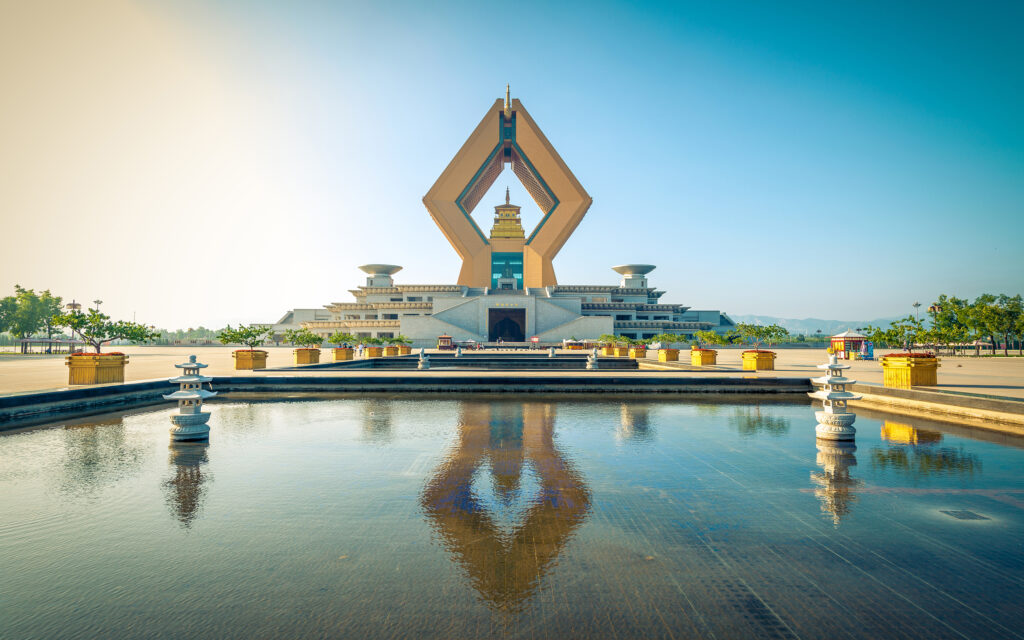
An Essential Guide to Visiting Famen Temple Cultural Scenic Area
In This Guide
- An Essential Guide to Visiting Famen Temple Cultural Scenic Area
- The Rich History and Legends of Famen Temple Cultural Scenic Area
- Main Highlights: What You Absolutely Can’t Miss
- Planning Your Visit: A Practical Guide
- Tickets: Prices, Booking, and Tips
- How to Get There: A Complete Transportation Guide
- Local Cuisine and Accommodation Nearby
- Frequently Asked Questions
- Final Thoughts on Your Trip
Visiting the Famen Temple Cultural Scenic Area is like stepping back in time, where ancient history and vibrant spirituality intertwine. Nestled in the serene landscape of Fufeng County, Shaanxi Province, this site is renowned for its deep historical significance and architectural grandeur. Famen Temple (法门寺), established over 1,700 years ago, is not only a revered place of worship but also a treasure trove of Buddhist relics, including what is believed to be a finger bone of the Buddha himself.
A Journey Through Time
As you approach the temple, you’ll be greeted by a mix of modern structures and ancient relics, reflecting the site’s layered history. The centerpiece, the True Relic Pagoda, once stood tall until it succumbed to natural disasters, revealing an underground palace filled with priceless Tang Dynasty artifacts. This discovery has drawn countless visitors eager to witness the remnants of a bygone era and the relics that have shaped Buddhist practices in China.
What to Expect
Upon entering the Cultural Scenic Area, you will find a blend of spirituality, culture, and commerce. The grand architecture of the new relic tower, built to house the Buddha’s finger bone, is a marvel of modern design, albeit often critiqued for overshadowing the ancient temple’s charm. Visitors can explore the temple grounds, participate in religious ceremonies, or simply absorb the serene atmosphere.
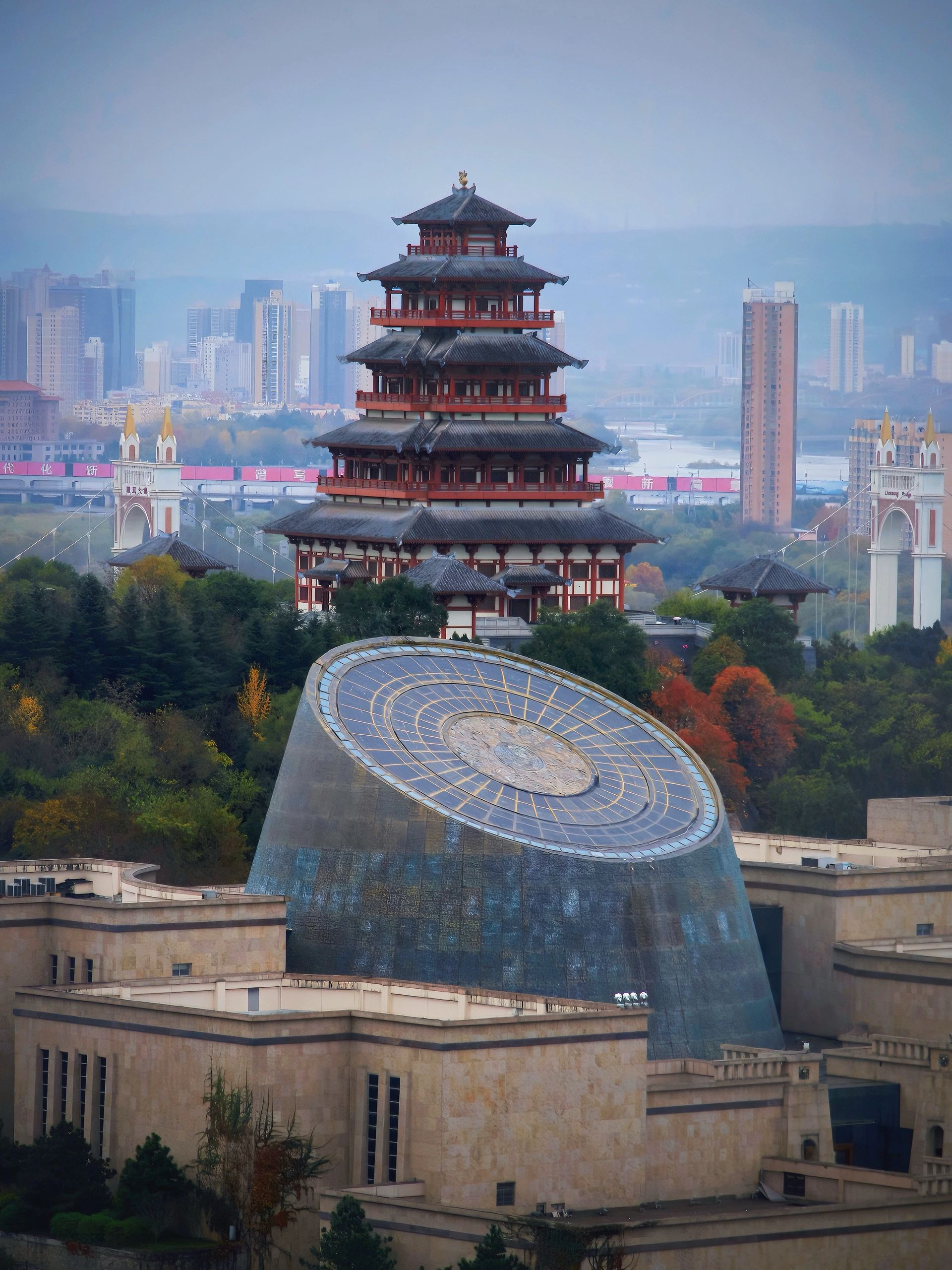
Famen_Temple_Cultural_Scenic_Area.
For history enthusiasts, the Famen Temple Museum offers an enlightening glimpse into the past, showcasing artifacts that narrate the rich narrative of Buddhism in China. The temple’s enduring spirit is palpable as worshippers light incense and engage in prayer, creating a unique ambiance that captivates all who enter.
Tips for Your Visit
- Plan Your Timing: The true relic is on display only during specific times (weekends and certain lunar calendar days). If you wish to see it, ensure your visit coincides with these dates.
- Dress Respectfully: As a functioning temple, modest attire is appreciated out of respect for the site’s sanctity.
- Be Prepared for Commercialization: While the site’s popularity has led to some commercialization, it does not detract from the overall experience of this historical landmark.
- Explore Nearby Attractions: Don’t miss the opportunity to visit the nearby Baoji Famensi Museum and the Zhouyuan Ruins, which can enrich your understanding of the region’s history.
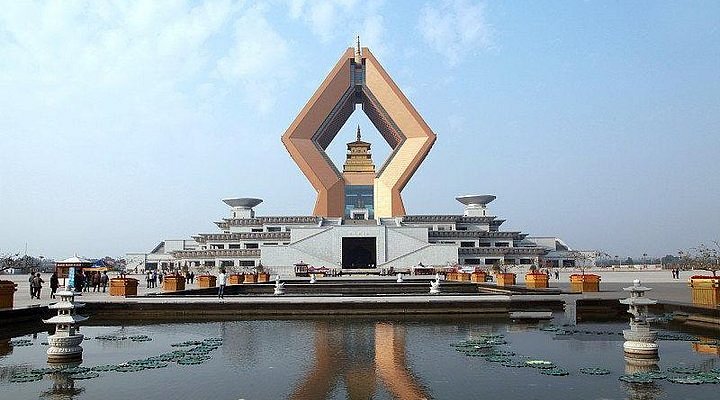
Famen_Temple_Cultural_Scenic_Area.
The Famen Temple Cultural Scenic Area is more than just a destination; it’s an invitation to engage with China’s profound history and spirituality. Whether you are a history buff, a spiritual seeker, or a curious traveler, this site promises an enriching experience that connects you to the heart of Chinese culture.
The Rich History and Legends of Famen Temple Cultural Scenic Area
Famen Temple, nestled in the serene hills of Fufeng County, Shaanxi Province, serves as a vibrant testament to China’s rich Buddhist heritage. Its history is steeped in legends, archaeological finds, and cultural significance, making it a captivating destination for international travelers eager to explore the depths of Chinese history.
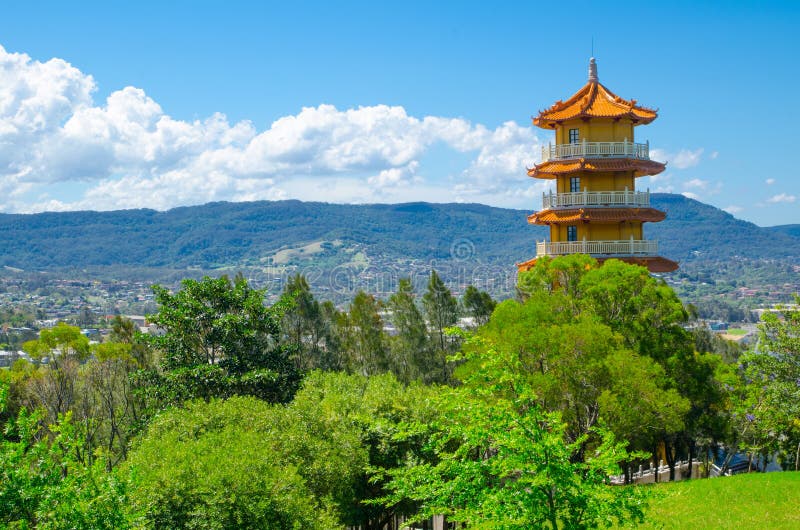
Famen_Temple_Cultural_Scenic_Area.
A Glimpse into History
The origins of Famen Temple date back to the Eastern Han Dynasty (25–220 AD), although it gained prominence during the Tang Dynasty (618–907 AD). It is renowned for housing what is believed to be the “True Relics” of the Buddha, specifically a finger bone, which has drawn pilgrims and scholars alike for centuries.
The temple’s significance was dramatically heightened in 1981 when heavy rains led to the accidental discovery of an underground palace beneath the collapsed True Relic Pagoda. This site revealed a treasure trove of Tang Dynasty artifacts, including the revered relic itself. This archaeological event not only provided invaluable insights into the era but also solidified the temple’s status as a sacred site in Buddhism.
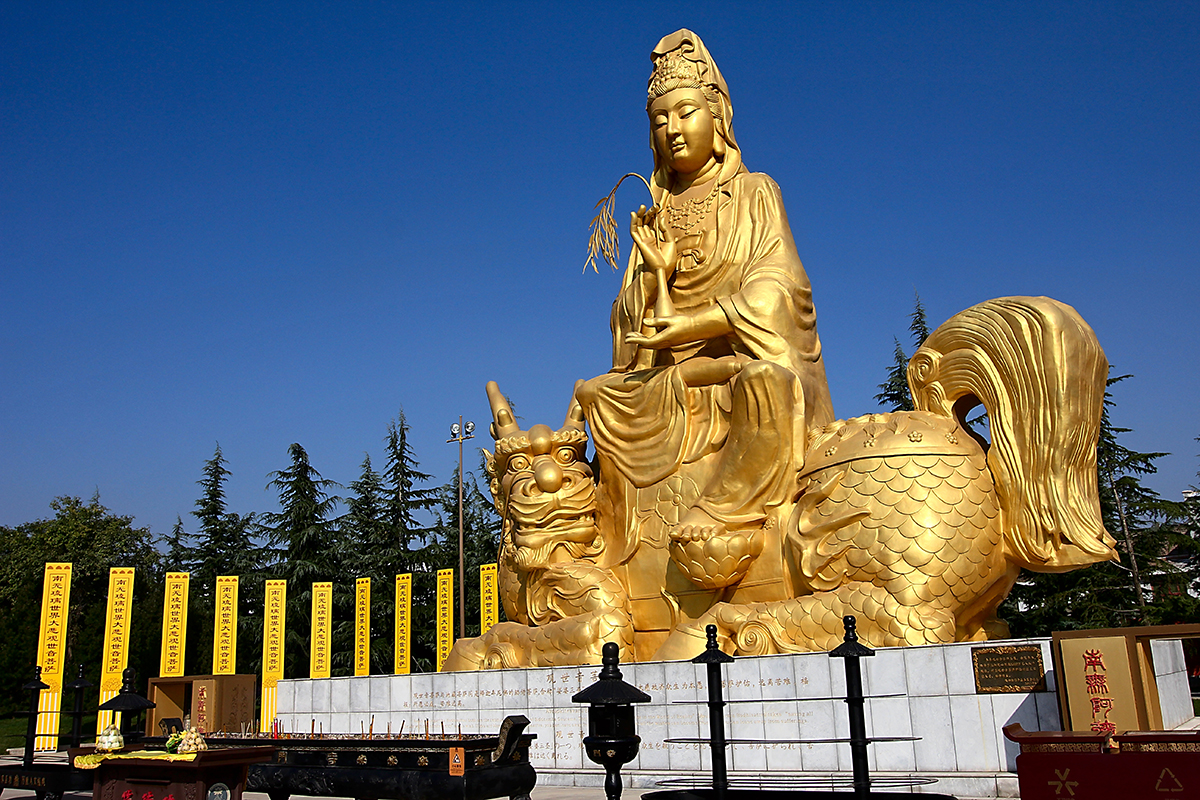
Famen_Temple_Cultural_Scenic_Area.
Legends and Lore
The allure of Famen Temple is not solely rooted in its historical significance but also in the legends that surround it. One of the most compelling tales speaks of the Relic’s Journey from India to China, following the imperial edicts of Tang emperors who sought to acquire relics to enhance the legitimacy of their rule. The journey of the relic symbolizes the deep cultural exchanges between India and China, emphasizing the transmission of Buddhist teachings.
Another revered legend is that of the Buddhist monk Huineng, who is said to have visited the temple. His teachings and enlightenment experiences are believed to have influenced the practices of many followers, further entrenching the temple as a center of spiritual learning and meditation.
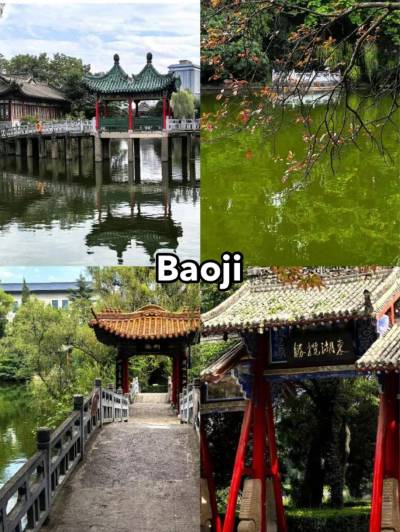
Famen_Temple_Cultural_Scenic_Area.
Architectural Marvels
Famen Temple is not without its architectural splendor. The site features a blend of ancient and modern structures, with the newly constructed Relic Tower—a massive edifice designed to showcase the True Relics—standing in stark contrast to the ancient pagoda and temple buildings. This juxtaposition raises discussions about the balance between commercialism and the preservation of cultural heritage.
The Temple Museum, located on-site, houses a collection of artifacts unearthed from the underground palace, offering visitors a glimpse into the artistry and craftsmanship of the Tang Dynasty. Here, you can marvel at intricately carved statues, ancient manuscripts, and ceremonial items that tell the story of Buddhism’s profound impact on Chinese culture.
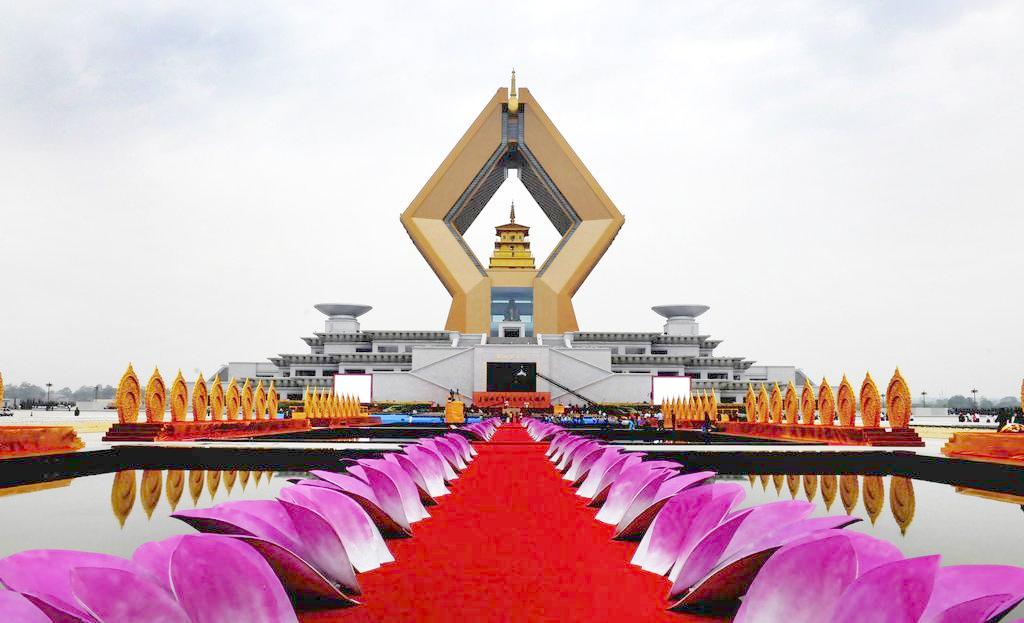
Famen_Temple_Cultural_Scenic_Area.
Cultural Significance and Modern-Day Practices
Today, Famen Temple remains a functional religious site, welcoming worshippers who come to light incense and offer prayers. The temple grounds are often filled with the fragrant smoke of burning joss sticks, creating an atmosphere of tranquility that enhances the visitor experience. For those interested in the intersection of history and spirituality, witnessing a ritual or ceremony can be a profound experience.
Visiting Famen Temple
Famen Temple Cultural Scenic Area is more than just a historical site; it is a living monument to the enduring legacy of Buddhism in China. While some visitors express concerns about over-commercialization, many agree that the site’s profound history and the beauty of its architecture make it a worthwhile visit. The True Relic is displayed on specific days, adding an element of anticipation for those keen to see this sacred artifact.
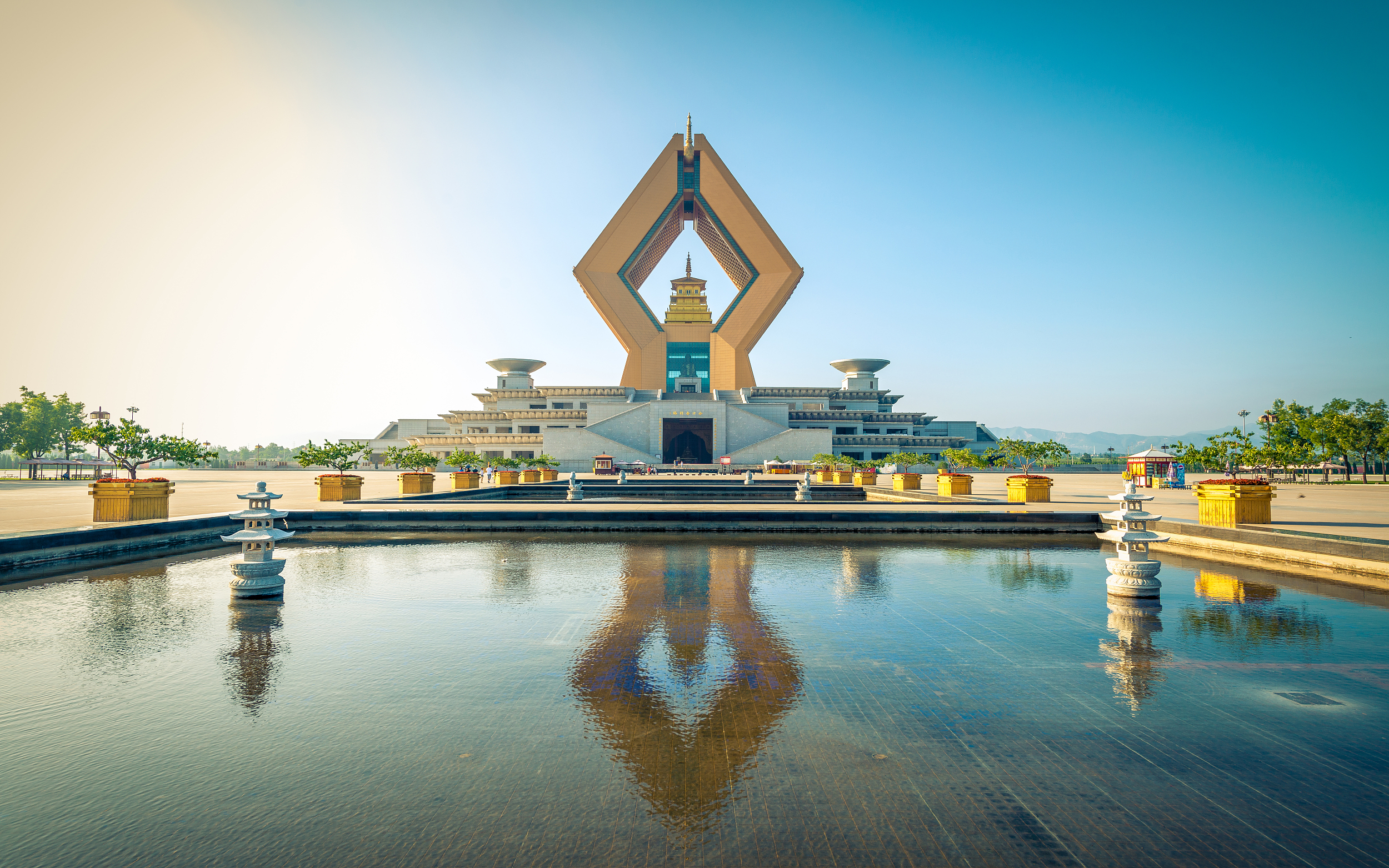
Famen_Temple_Cultural_Scenic_Area.
In summary, Famen Temple is a remarkable destination that encapsulates the rich tapestry of Chinese history, culture, and spirituality. For international travelers, it offers a unique opportunity to delve into the legends that have shaped not only a temple but also an entire tradition of thought and belief that resonates across centuries.
Main Highlights: What You Absolutely Can’t Miss
Discovering the Famen Temple Cultural Scenic Area
Nestled in the serene landscape of Fufeng County, Shaanxi province, the Famen Temple Cultural Scenic Area (法门寺文化景区) is a remarkable destination where history, culture, and spirituality converge. This site, rich in Buddhist heritage, boasts a wealth of attractions that should not be overlooked by any traveler eager to delve into the depths of Chinese history and culture.
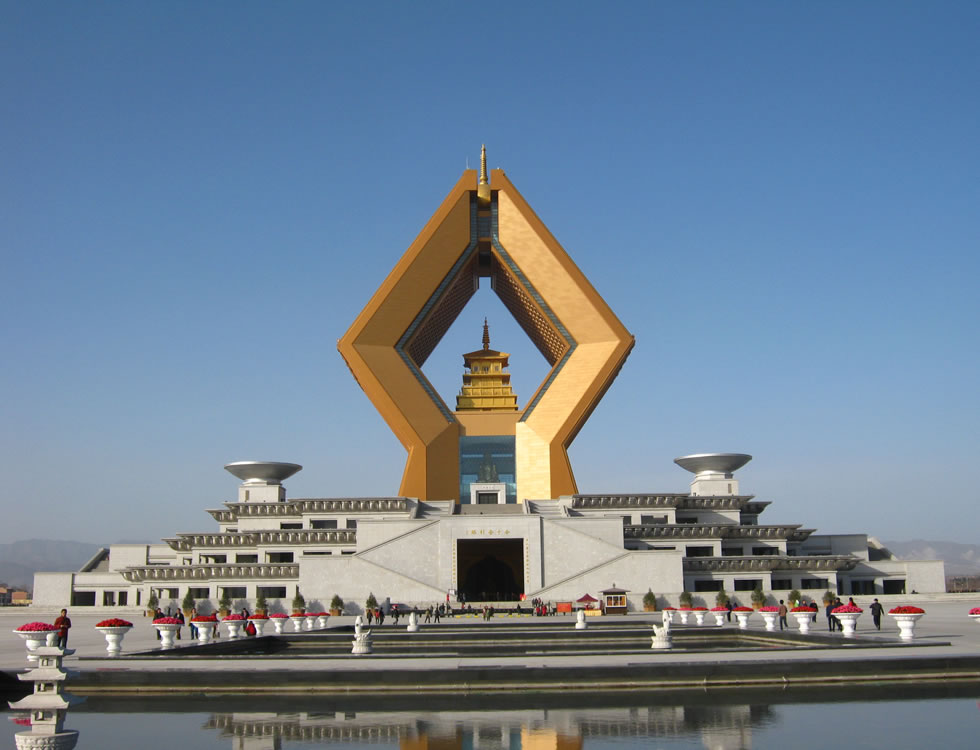
Famen_Temple_Cultural_Scenic_Area.
1. The Famen Temple (法门寺)
As the centerpiece of the scenic area, Famen Temple is a stunning example of ancient Chinese architecture, originally built during the Eastern Han Dynasty. The temple is renowned for housing the “True Relics” of the Buddha, believed to be a finger bone of Siddhartha Gautama himself. The temple’s storied past, combined with its ongoing role as a place for worship and reflection, offers visitors a unique glimpse into the living traditions of Buddhism in China.
- Tip: To witness the “True Relics,” plan your visit for a Saturday, Sunday, or a public holiday, as they are only displayed on these specific days.
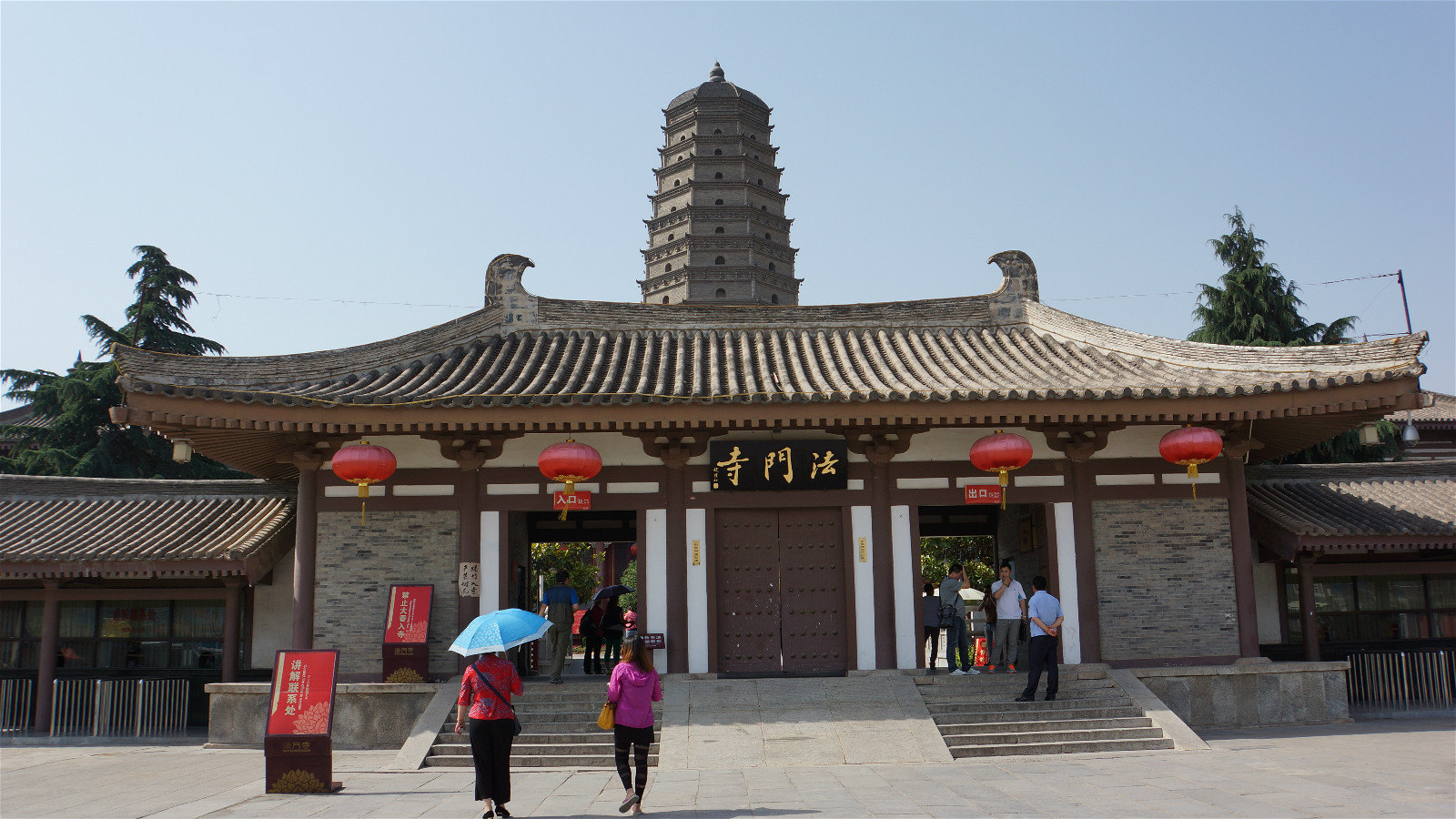
Famen_Temple_Cultural_Scenic_Area.
2. The True Relic Pagoda (真舍利塔)
One of the most significant structures within the complex, the True Relic Pagoda, dramatically reconstructed after severe damage, reflects the architectural prowess of the Tang Dynasty. Its imposing presence is accentuated by a modern design that some visitors find controversial due to its stark contrast with the ancient surroundings. Despite differing opinions, the pagoda is an essential stop to understand the site’s historical context.
- Must-See: The underground chamber beneath the pagoda holds a treasure trove of relics and artifacts, including exquisite Tang Dynasty creations that highlight the era’s cultural richness.
3. The Temple Museum (法门寺博物馆)
Adjacent to the main temple, the Temple Museum showcases an impressive collection of artifacts unearthed during archaeological excavations, including pottery, sculptures, and inscriptions. This museum serves as a narrative of the temple’s history, providing insight into the Buddhist practices and artistic achievements of the Tang Dynasty.
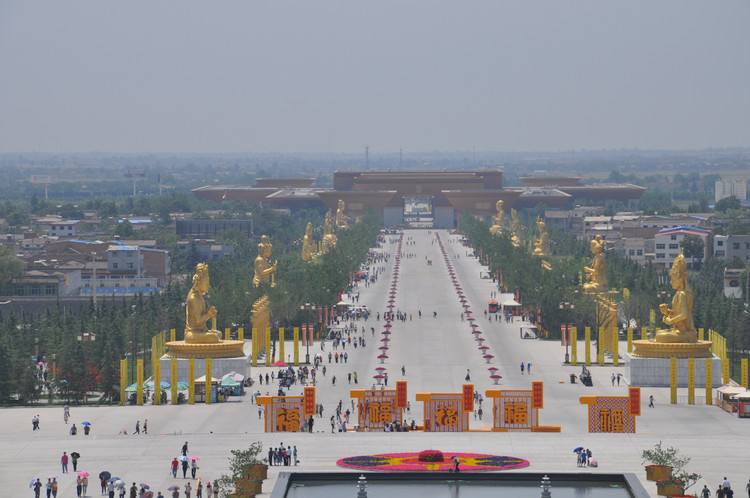
Famen_Temple_Cultural_Scenic_Area.
- Highlight: Don’t miss the artifacts related to the relics—including beautifully crafted boxes and ceremonial items—that bring to life the significance of the relics and their role in the Buddhist faith.
4. The Treasure Hall (宝藏厅)
The Treasure Hall, located within the scenic area, is dedicated to presenting the treasures of the temple’s rich heritage. Here, visitors can view some of the most significant relics discovered during the excavation of the True Relic Pagoda, including various Buddhist artifacts that reflect the depth of Chinese Buddhist culture.
- Insider Knowledge: The hall often features temporary exhibitions that delve deeper into specific themes related to Buddhism and Chinese culture, making each visit potentially unique.
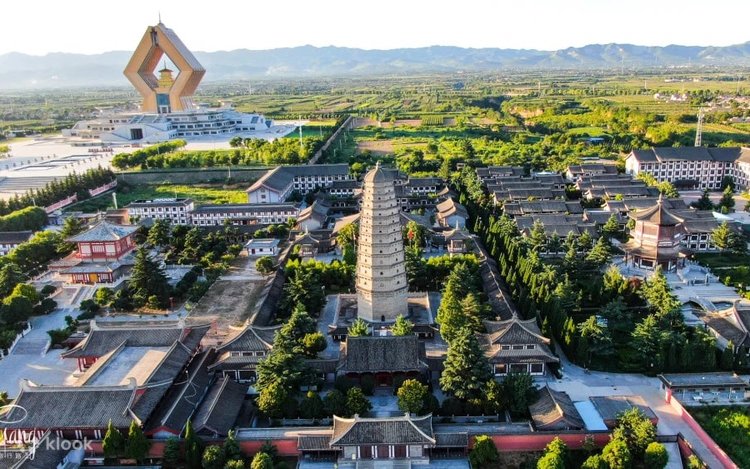
Famen_Temple_Cultural_Scenic_Area.
5. Scenic Gardens and Surrounding Areas
Beyond the temple structures, the scenic area is adorned with beautifully landscaped gardens, perfect for a leisurely stroll or a moment of reflection. The gardens offer a peaceful atmosphere, allowing visitors to connect with nature while contemplating the profound history that surrounds them.
- Best Time to Visit: Early morning or late afternoon provides a quieter environment, perfect for photography and contemplation.
6. Cultural Performances and Events
Throughout the year, Famen Temple hosts various cultural performances and events, including traditional music and dance that celebrate the site’s Buddhist heritage. Engaging in these performances can offer visitors a deeper understanding of the cultural practices associated with Buddhism in China.
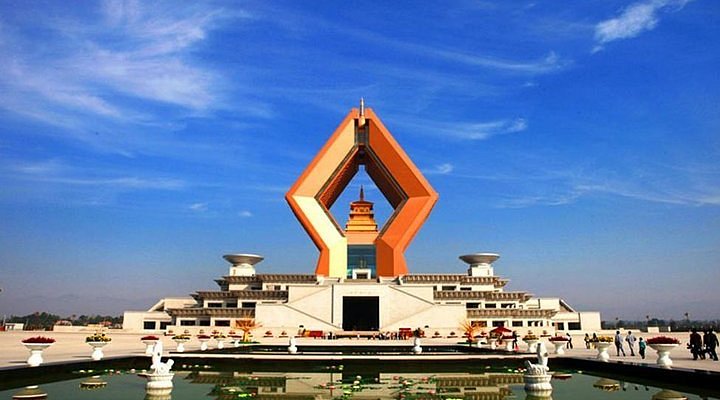
Famen_Temple_Cultural_Scenic_Area.
- Plan Ahead: Check the temple’s schedule for special events during your visit to enhance your experience with live performances.
7. Local Cuisine and Souvenirs
After exploring the temple grounds, indulge in local cuisine available at nearby eateries. Traditional Shaanxi dishes, such as hand-pulled noodles and dumplings, provide a delicious way to experience the region’s culinary heritage. Additionally, various shops in the area offer unique souvenirs, including Buddhist artifacts and handicrafts, making for memorable keepsakes from your journey.
Conclusion
Visiting the Famen Temple Cultural Scenic Area is not just an exploration of historical architecture and artifacts; it is a journey into the heart of Chinese Buddhist culture. From the awe-inspiring relics to the tranquil gardens, this site offers an enriching experience that resonates long after you leave its grounds. Whether you are a history buff, a culture enthusiast, or simply seeking a serene escape, Famen Temple is a destination that promises to captivate and inspire.
Planning Your Visit: A Practical Guide
Essential Information for Your Visit to Famen Temple Cultural Scenic Area
Famen Temple Cultural Scenic Area (法门寺文化景区) is a captivating fusion of history, spirituality, and architecture that draws visitors from around the globe. As you plan your visit, here’s everything you need to know to make the most of your experience.
Getting There
- Location: Famen Temple is situated in Fufeng County, Shaanxi Province, about 120 kilometers (75 miles) northwest of Xi’an, the ancient capital of China.
- Transportation:
- By Bus: Frequent buses run from Xi’an to Fufeng County. The journey takes approximately 1.5 to 2 hours. Tickets typically cost around CNY 37.5.
- By Car: If you prefer driving, the route is straightforward, but be prepared for potential traffic delays.
- Guided Tours: Consider booking a private or group tour from Xi’an that includes transportation to the temple along with guided commentary.
Opening Hours
- The temple is open daily from 8:30 AM to 6:00 PM. Be sure to check for any seasonal changes in hours or special closures.
Admission Fees
- The entrance fee to the Famen Temple Cultural Scenic Area can vary, typically around CNY 180 for access to the main attractions, including the underground relics display. Note that additional fees may apply for the underground chamber where the “true relic” is shown.
Key Attractions
- Famen Temple: This ancient temple is known for housing a relic believed to be a finger bone of the Buddha, a treasure that draws pilgrims and tourists alike.
- Underground Palace: Discover the archaeological findings from the Tang Dynasty, including priceless artifacts displayed in a beautifully restored chamber.
- Treasure Hall: Don’t miss the temple museum, where many relics and artifacts are showcased, providing insight into the temple’s rich history.
- Architectural Marvels: The modern “Relic Tower” is a striking contrast to the ancient structures, although opinions vary on its aesthetic value.
Tips for Your Visit
- Best Times to Visit: Weekends and public holidays are popular times to see the “true relic.” If you want to view it on a weekday, plan accordingly as it may not be displayed outside of major dates.
- Dress Code: As a place of worship, modest clothing is encouraged. Be respectful of local customs and practices.
- Photography: While photography is generally allowed, be mindful of worshippers and avoid disrupting ceremonies.
- Food and Drink: There are several dining options around the temple grounds, offering local vegetarian meals. Prices are reasonable, but cash or Chinese payment apps like WeChat Pay may be required.
Nearby Attractions
While in the area, consider exploring other sites that complement your visit to Famen Temple:
- Baoji Famensi Museum: A short distance away, this museum provides further historical context about the region’s Buddhist heritage.
- Zhouyuan Museum: Dive deeper into the local history and culture of the Zhou Dynasty.
- Jingwei Wetland Nature Reserve: For a breath of fresh air and a taste of nature, this nearby reserve offers scenic views and walking paths.
Final Thoughts
A visit to Famen Temple Cultural Scenic Area is not just a journey through history but also an opportunity to engage with the spiritual essence of Buddhism in China. Whether you are an avid history buff or simply looking to explore the cultural fabric of this ancient civilization, Famen Temple offers a rich tapestry of experiences that will leave a lasting impression. Plan ahead, respect the traditions, and enjoy your journey through this remarkable site.
Tickets: Prices, Booking, and Tips
Planning Your Visit to Famen Temple Cultural Scenic Area
Visiting the Famen Temple Cultural Scenic Area is a fascinating journey into China’s rich history and Buddhist heritage. Before embarking on your adventure, it’s essential to understand the ticketing process, pricing, and some tips to enhance your experience.
Ticket Prices
- General Admission: The entrance fee is typically CNY 180 (approximately $26 USD). This covers access to the main temple complex and various exhibits.
- Discounted Tickets: Reduced prices may be available for students and seniors, so be sure to inquire about eligibility when purchasing your tickets.
- Special Exhibits: Access to the underground chamber showcasing the “true relic” of the Buddha is subject to an additional donation fee, especially on days when it is on display (Saturdays, Sundays, public holidays, and the 1st and 15th of the Lunar calendar).
Booking Options
-
Online Reservations: It is advisable to book tickets through official websites or reputable travel platforms in advance, especially during peak tourist seasons. This can save you time and ensure availability.
-
On-Site Purchase: Tickets can also be purchased at the entrance, but be prepared for queues, particularly on weekends and holidays.
-
Guided Tours: Consider joining a guided tour that includes Famen Temple in its itinerary. These tours often provide additional insights into the temple’s history and significance, making your visit more enriching. Prices for guided tours start around CNY 89 (approximately $13 USD) and can go up depending on the inclusions.
Tips for Your Visit
-
Timing is Key: To avoid large crowds, try to visit on weekdays or early in the morning. If you’re keen on seeing the “true relic,” plan your visit on one of the specified display days.
-
Plan Your Transportation: The temple is located approximately 100 kilometers from Xi’an. Buses run frequently from Xi’an’s main bus station; tickets cost about CNY 37.5 (around $5.50 USD), and the journey takes about 1.5 to 2 hours.
-
Dress Appropriately: As a site of worship, visitors are encouraged to dress modestly. Comfortable shoes are also recommended, as you may explore extensive grounds and walk through historical exhibits.
-
Explore the Surroundings: Don’t miss the nearby museums, such as the Baoji Famensi Museum, which showcase the rich artifacts and history of the area.
-
Food and Drink: The site offers reasonably priced food options, making it convenient to grab a meal during your visit. However, purchasing food may require mobile payment methods like WeChat Pay, so be prepared with cash if you’re unfamiliar with these systems.
-
Be Prepared for Commercialization: Some reviews suggest that the site can feel over-commercialized. Keep this in mind as you navigate the space and focus on the elements of history and culture that resonate with you.
By understanding the ticketing process and planning your visit strategically, you can fully appreciate the cultural richness of the Famen Temple and its surrounding area. Enjoy your journey into the heart of China’s Buddhist heritage!
How to Get There: A Complete Transportation Guide
Navigating to Famen Temple Cultural Scenic Area: Your Transportation Guide
Revered for its historical significance and stunning architecture, the Famen Temple Cultural Scenic Area (法门寺文化景区) is a must-visit for anyone intrigued by Chinese history and culture. Located in Fufeng County, Shaanxi Province, this site is not only a spiritual haven but also a treasure trove of relics from the Tang Dynasty. Here’s how to get there smoothly, whether you’re traveling from Xi’an or elsewhere.
Getting to Famen Temple from Xi’an
1. By Bus:
One of the most convenient ways to reach the Famen Temple from Xi’an is by bus.
- Departure Point: Buses to Famen Temple leave from Xi’an’s Xianyang Long-distance Bus Station or Xi’an Bus Station.
- Ticket Price: Approximately CNY 37.5 per person.
- Travel Duration: Expect a journey time of about 1.5 to 2 hours.
- Frequency: Buses run regularly throughout the day, but it’s advisable to check the schedule ahead of time. Be wary of potential delays, especially during peak hours.
2. By Private Car:
If you prefer a more personal experience, consider hiring a private car or taxi.
- Travel Time: The drive from Xi’an to Famen Temple takes roughly 1.5 hours depending on traffic.
- Cost: Negotiating a fare ahead of time is recommended, but expect to pay around CNY 200-300 for a one-way trip.
Local Transportation Around Famen Temple
Once you arrive in Famen, the temple is easily accessible.
- Walking: The Famen Temple Cultural Scenic Area is compact and can be explored on foot. The main attractions, including the museum and the underground palace, are within walking distance of each other.
- Public Buses: If you wish to explore the surrounding area, local buses are available. However, information may not always be available in English, so it’s advisable to have a translation app handy.
Essential Tips for Your Journey
- Check the Schedule: Buses may not adhere strictly to a timetable, especially during holidays or weekends. Consider arriving early at the bus station to ensure a spot.
- Plan for the Return Trip: Buses back to Xi’an can be less frequent in the afternoon, so make sure to confirm the return schedule. It’s recommended to leave Famen Temple by mid-afternoon to avoid any delays.
- Special Days for Viewing Relics: If you are keen to see the “true relics” housed in the temple, plan your visit on weekends, public holidays, or the first and fifteenth days of the lunar calendar. On these days, the relics are on display, while on other days, access may require a donation.
Final Thoughts
Visiting the Famen Temple Cultural Scenic Area is a profound journey into the depths of Chinese history and spirituality. With its impressive relics and serene environment, it’s an experience not to be missed. Whether you choose the bus or a private ride, your adventure to this ancient site will be a memorable addition to your travels in China. Prepare to immerse yourself in the captivating stories that this sacred place has to tell!
Local Cuisine and Accommodation Nearby
Culinary Delights and Comfortable Stays near Famen Temple
Visiting the Famen Temple Cultural Scenic Area is not just a journey into the rich tapestry of Chinese history and Buddhism, but also an opportunity to indulge in local cuisine and find cozy accommodations. Here’s a guide to enhance your experience.
Local Cuisine
- Vegetarian Delights at Famen Temple
- Location: On-site at Famen Temple
-
Highlights: Offering a range of traditional vegetarian meals, this eatery prides itself on serving fresh and flavorful dishes that cater to both pilgrims and tourists. The meals are simple yet delicious, often featuring seasonal vegetables cooked with light sauces, making them a healthy choice after a day of exploration.
-
Zhouyuan Restaurant
- Location: Near Zhouyuan Museum (approximately 0.5 miles from Famen Temple)
-
Specialties: Known for its authentic Shaanxi dishes, Zhouyuan Restaurant offers a delightful array of local favorites such as biangbiang noodles and yangrou paomo (bread soaked in mutton soup). The rustic decor adds to the charm, making it a perfect spot for travelers looking to experience local flavors.
-
Baoji Family Kitchen
- Location: In Baoji City (about 30 minutes from Famen Temple)
-
Cuisine: This family-run restaurant specializes in home-style cooking, featuring dishes like stir-fried seasonal greens and fried dumplings. The warm hospitality combined with hearty, traditional fare creates an inviting atmosphere for those wishing to unwind after a busy day.
-
Street Food Stalls
- Location: Around Famen Temple and in nearby towns
- Must-Try Items: Don’t miss out on sampling local street food, such as jiaozi (dumplings) and baozi (steamed buns). These quick bites are perfect for those on the go and provide a taste of authentic, everyday Chinese cuisine.
Nearby Accommodations
- Famen Temple Hotel
- Type: Mid-range hotel
-
Overview: Located just a short walk from the temple, this hotel offers comfortable rooms with modern amenities and stunning views of the surrounding landscape. The hotel also provides guided tours and transportation services, making it convenient for visitors.
-
Xianyang Airport Hotel
- Type: Budget-friendly option
- Location: About 30 minutes from Famen Temple
-
Features: Ideal for travelers seeking comfort without breaking the bank, this hotel offers clean rooms and basic facilities. Its proximity to the airport and major attractions like the Terracotta Army makes it a convenient choice.
-
Jinjiang Inn Baoji Famen Temple
- Type: Economy hotel
-
Overview: Situated close to the Famen Temple, this chain hotel provides a reliable and comfortable stay with all essential amenities. It’s a perfect base for exploring the region, with friendly staff ready to assist with travel arrangements.
-
Boutique Guesthouses
- Location: In Fufeng County
- Description: For those seeking a unique experience, consider staying at one of the boutique guesthouses that reflect local architecture and hospitality. These charming accommodations often offer home-cooked meals and personalized service, providing an authentic glimpse into local life.
Conclusion
A visit to the Famen Temple Cultural Scenic Area is a gateway to not only historical wonders but also a rich culinary landscape and comfortable stays. Whether you are savoring traditional vegetarian dishes or resting in a cozy hotel, your experience will be enriched by the local flavors and hospitality of this fascinating region.
Frequently Asked Questions
Frequently Asked Questions About Famen Temple Cultural Scenic Area
1. What is the Famen Temple Cultural Scenic Area?
The Famen Temple Cultural Scenic Area is a significant Buddhist site located in Fufeng County, Shaanxi Province. It houses the Famen Temple, renowned for its historical and cultural artifacts, including the “True Relic,” believed to be a finger bone of the Buddha. The site is a blend of ancient architecture and modern developments, making it a unique destination for those interested in Chinese history and Buddhism.
2. What are the opening hours?
Famen Temple is open daily from 8:30 AM to 6:00 PM. However, be aware that the display of the “True Relic” is limited to Saturdays, Sundays, public holidays, and the 1st and 15th days of the Lunar calendar. Make sure to plan your visit accordingly if you wish to see this significant artifact.
3. How do I get to Famen Temple from Xi’an?
To reach Famen Temple from Xi’an, you can take a bus from the Xi’an bus station. The journey typically takes 1.5 to 2 hours. Alternatively, you can consider joining a guided tour that includes transportation, which might provide a more convenient experience.
4. Is there an admission fee?
Yes, visiting the Famen Temple requires an admission fee. The price may vary, so it’s advisable to check the latest information ahead of your visit. Discounts may be available for students or seniors, but always confirm the eligibility requirements at the ticket counter.
5. What can I expect to see at the site?
Visitors can explore the stunning architecture of the Famen Temple and its surrounding structures, including the recently built Relic Tower, which houses the “True Relic.” Additionally, the on-site museum offers a glimpse of Tang Dynasty relics and other invaluable artifacts discovered during archaeological excavations.
6. Are there any dining options available on-site?
Yes, the Famen Temple Cultural Scenic Area features several dining options that offer reasonably priced meals. Visitors have noted that the food is both simple and delicious, making it a great place to recharge during your exploration of the site.
7. Is the site suitable for non-Buddhists or those with limited knowledge of Buddhism?
Absolutely! While the Famen Temple is a functioning Buddhist site, it is open to all visitors. The unique architecture, historical significance, and fascinating relics make it an enriching experience for anyone interested in cultural heritage, regardless of their religious background.
8. What should I keep in mind while visiting?
When visiting Famen Temple, it is essential to be respectful of the worshippers and the sacred environment. Dress modestly, follow any posted signs, and be mindful of photography restrictions, particularly in areas where worship is taking place. Additionally, consider visiting during weekdays to avoid larger crowds.
Final Thoughts on Your Trip
As you conclude your journey through the Famen Temple Cultural Scenic Area, reflect on the profound layers of history, culture, and spirituality that this remarkable site embodies. With its roots tracing back to the Tang Dynasty, Famen Temple stands as a testament to the enduring legacy of Buddhism in China, a place where past and present intertwine.
A Cultural Tapestry
During your visit, you may have noticed the juxtaposition of ancient architecture with modern developments. While some travelers express concerns about commercialization, this dynamic can also be seen as a reflection of the site’s significance in contemporary society. The grandeur of the new relic tower, despite its cost and scale, serves to honor the precious artifacts that hold immense historical value, including the revered “true relic” believed to be a finger bone of the Buddha.
Engaging with History
Engage deeply with the stories that unfold within the temple grounds. From the underground palace showcasing Tang Dynasty relics to the serene atmosphere of the active worship space, each corner of Famen Temple tells a story. Take the time to explore the Treasure Hall, which houses exquisite artifacts, and consider the rich tapestry of beliefs and practices that have flourished here for over a millennium.
Recommendations for Your Visit
- Timing: Plan your visit around weekends or public holidays to view the “true relic” in all its glory.
- Explore the Surroundings: Don’t miss the nearby museums and the beautiful landscapes of Fufeng County, which offer additional insights into the region’s cultural heritage.
- Culinary Delights: Enjoy local vegetarian cuisine on-site, which provides a delightful taste of the region while complementing your spiritual journey.
Final Reflections
Famen Temple is more than just a destination; it is an invitation to delve into the depths of Chinese culture and history. As you depart, carry with you not only the memories of the stunning architecture and sacred relics but also a newfound appreciation for the intertwining of faith, history, and art. Whether you are a history enthusiast, a spiritual seeker, or simply a curious traveler, Famen Temple offers a unique opportunity to connect with the past while contemplating the present